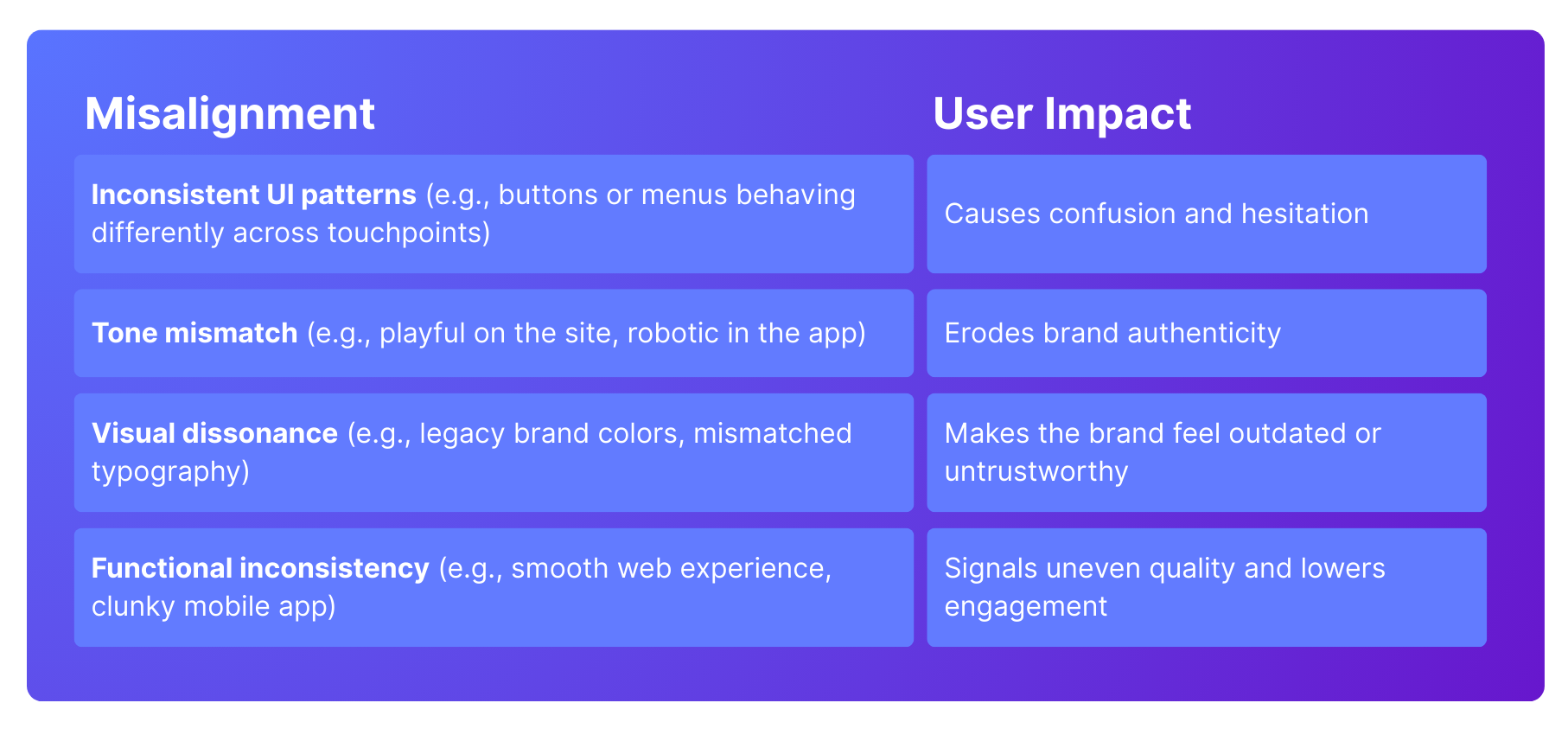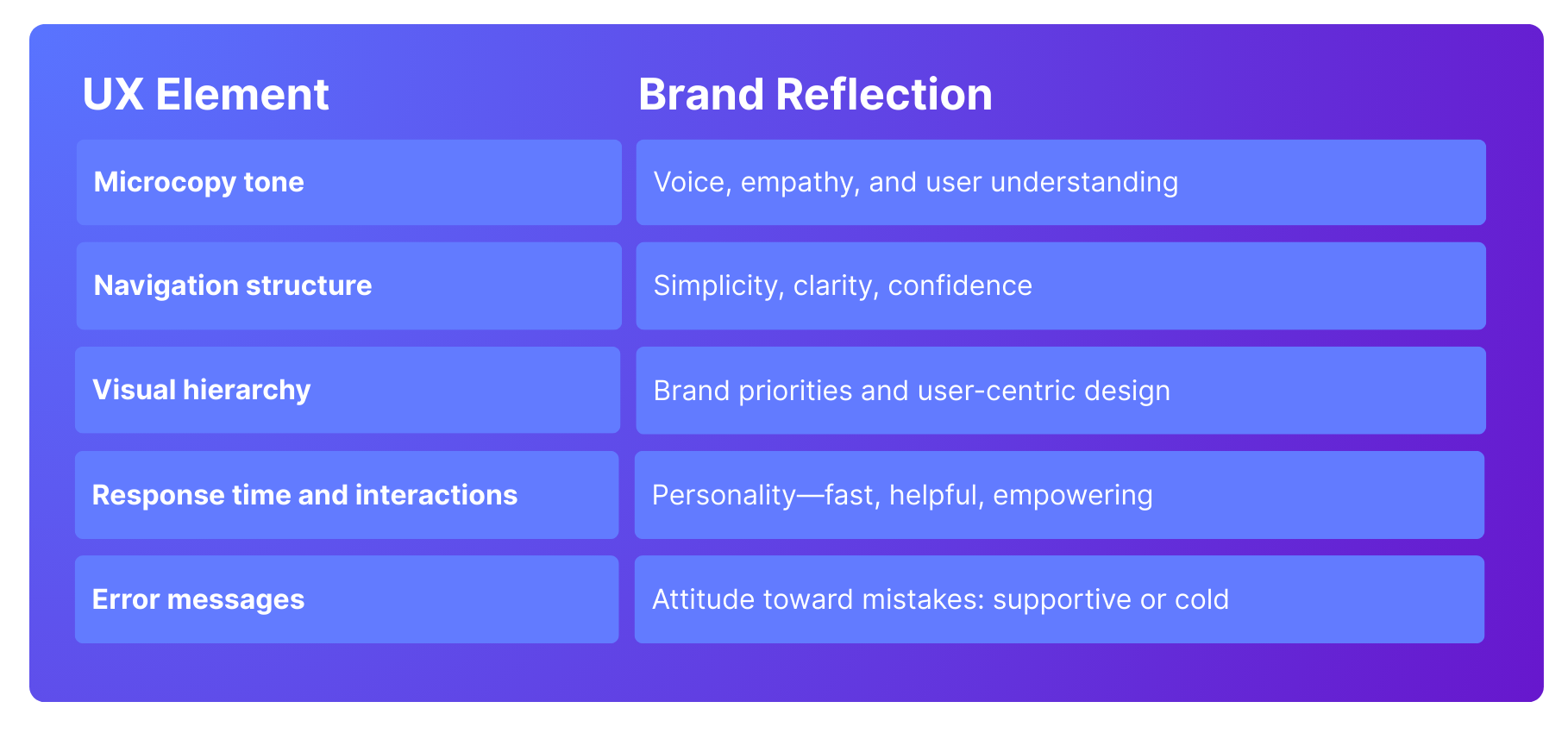Does your UX reflect your brand? Consistency between user experience and brand identity is the key to building trust, credibility, and higher conversions.
In today’s digital world, brand trust isn’t declared—it’s experienced. Click by click, screen by screen.
For mid-sized companies navigating growth, creating that trust requires more than a striking logo or a set of brand guidelines. It requires a digital experience that feels intentional, seamless, and unmistakably “you.” When UX and brand are out of sync, even subtly—users notice. And often, they leave.
In this article, we explore how UX and brand alignment becomes a force multiplier for growing businesses. We’ll break down the risks of misalignment, share real-world examples, and offer practical strategies for designing unified experiences that build loyalty and drive conversions.

Consistency is no longer Cosmetic—It’s Strategic
As mid-sized enterprises scale, their digital ecosystem often becomes fragmented. Different teams own different platforms: marketing runs the website, product oversees the app, and customer support manages the portal. Over time, this structure leads to inconsistent experiences, even if unintentionally.
UX consistency isn’t about visual sameness — it’s about brand coherence. Every element — copy, color, transitions, tone — should reinforce the same personality and promise.
One of our scaling fintech clients had a sleek, modern mobile app — but its desktop platform still used outdated fonts, legacy UI patterns, and inconsistent button behaviors. Customers began questioning the platform’s reliability — not because of security issues, but because the experience felt disjointed. Inconsistency creates doubt, and doubt erodes trust.
What Happens When UX and Brand Drift Apart?
Misalignment doesn’t always scream, it whispers. But those whispers accumulate into real user friction. Here are some ways the disconnect can quietly damage your brand experience:

Even small inconsistencies can create emotional disconnection. And in a world where users compare every digital experience to the best one they’ve ever had, that’s a high bar.
UX and Brand: Two Sides of the Same Experience
We don’t see brand and UX as separate tracks. they are one journey. The brand sets the promise; UX delivers the proof. Let’s take a closer look:

A B2B software company redesigned its onboarding flow to reflect core brand values: transparency, simplicity, and empowerment. They improved tooltips, added human-centered microcopy, and reduced friction. Result? Onboarding completion jumped by 18%, and user feedback included words like “clear,” “easy,” and—importantly—“feels like your brand.”
What Mid-Sized Businesses Can Do About It
To scale trust along with your products, you need a systematic approach to UX-brand alignment. Here’s how to make it happen:
Run a UX & Brand Alignment Audit
Evaluate all digital touchpoints — web, app, email, dashboards. Where are the inconsistencies? Find out where does the experience feel “off-brand” or uneven?
Build a Shared Design Language
Invest in a scalable design system that reflects your brand identity — colors, components, tone of voice, motion guidelines, accessibility principles. Make it the single source of truth.
Enable Cross-Team Collaboration
UX isn’t just a design responsibility. Align marketing, product, design, and dev teams around a shared understanding of the brand, not just visually, but experientially. Use journey mapping workshops and regular reviews to stay unified.
Design Experiences, Not Just Screens
Every scroll, tap, and tooltip tells a story. Ensure that story reflects your brand values — from onboarding to support resolution.
Test for Brand Perception
In usability testing, don’t just ask “Is this easy to use?” Ask: “Does this feel like Your Brand?” The answers often reveal more than analytics.
What Happens When It Works?
The benefits of aligned UX and branding aren’t just anecdotal—they’re measurable:
- Higher user satisfaction and trust
- Increased engagement and reduced churn
- Stronger brand recognition and emotional connection
- Better onboarding and higher feature adoption
- Scalable consistency across teams and regions

An edtech client redesigned their student dashboard to reflect values of inclusion and simplicity. By aligning tone, flow, and visuals across web and mobile, conversion to trial jumped 30%, and support tickets dropped by 22%. It wasn’t just easier—it felt right.
In a digital-first world, UX is your brand in motion. If your visual identity makes the promise, your experience needs to fulfill it — consistently, meaningfully, and at scale.
Brand alignment isn’t a visual refresh. It’s a strategic investment in user trust and business performance. So, the next time you update your product or evolve your brand, ask yourself: Does my UX feel like my brand?
If not, it’s time to design with intention.


